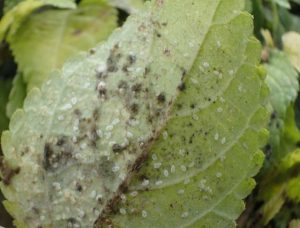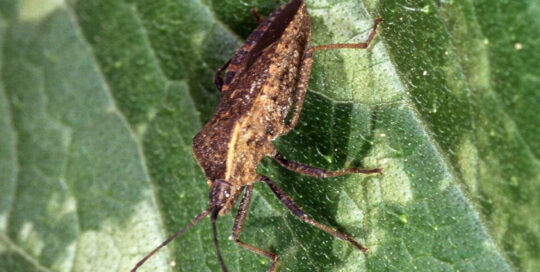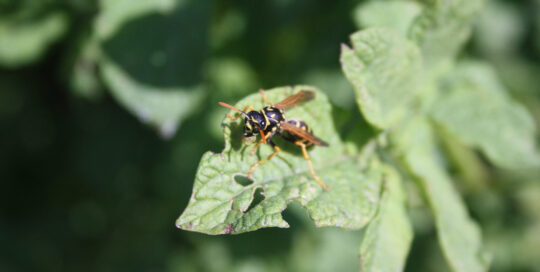Search for Pests on the Underside of Leaves
Views: 1066

The search for pests – a less than exciting egg hunt. It’s the night before Easter and the eggs are loaded with candy ready to hide as soon as the boys are asleep… although in reality it’ll probably happen in the wee hours of the morning when I typically wake up before the rest of the house. On most years I’m in the backyard with my headlamp, undoubtedly to the amusement of the neighbors watching the crazy lady in her pajamas and winter coat trying to figure out where to put the eggs. But since 4 inches of snow fell last night and tonight’s temps are dipping down to 9 degrees, the “Easter Bunny” is going to wimp out and stay indoors.
With searching in mind, it made me think of how to look for pests on your plants, whether indoor varieties, seedlings, or your plants once they are outside. You have to look early to find the eggs of many pests, as well as the newly hatched larvae lurking within the protection of the foliage.
In the picture white fly eggs cling to a leaf. An adult female can lay hundreds of eggs on a leaf where they hatch within 5-10 days. The first instar nymphs spread out and flatten themselves on the leaf to feed throughout 3 more stages, all within 25 days. They are easier to kill at this stage because they are in one place. Spraying them off with hot water or insecticidal soap is one of the easiest ways to do it.
Colorade potato beetles
A very visible pest to spot are the Colorado potato beetles with their clusters of bright orange eggs attached to the underside of potato leaves. A female lays between 10-30 eggs at a time, but can produce upwards of 300 eggs in her short adult lifespan. See why it’s important to stay ahead of the game? You don’t have much time, possibly as short as 10 days, to eliminate the eggs and prevent them from developing into adults. Crush the eggs or pick off the entire leaf and destroy it when you find them.
Scale, which are tiny insects equipped with an armor-like exterior, are often found on the stems of plants, as well as under the leaves. You can use insecticidal soap or a Neem based product to kill the larvae. Also, dabbing the scale itself with an alcohol soaked cotton swab can also take care of them, but be careful that you don’t drip too much alcohol on the plant itself or the alcohol can burn it.
Cabbage Moths
Cabbage moths, the bane of us who love the Brassica family, lay eggs on the outer leaves of cabbage, broccoli, cauliflower, Brussels sprouts, and the like. While they’re a little more difficult to spot unless you’re really looking, they are easy to squish and destroy before they turn into the caterpillars.
For many of us it’s important to be vigilant because they’re very difficult to kill once they’re adults, and they do a considerable amount of damage to squash plants due to infecting them with bacterial wilt. The egg masses are a light brown, slightly orangish in color tucked underneath the big leaves. Go out in the morning to see if you can find them, scraping them off with your fingernail or a garden tool. If they fall on the ground, predatory insects will eat them and they won’t hatch.
Looking for eggs takes time, but when you find them early in the season, you ultimately save yourself a lot of headaches later in the season when the eggs have grown to adults that are equally hungry and ready to reproduce.
Meet Amy Grisak
Amy is a freelance author and photographer in Great Falls, MT who specializes in gardening, foods, and sustainable agriculture. She provides information on every kind…
Amy's Recent Posts

Squish Squash Bugs Before They’re a Problem








